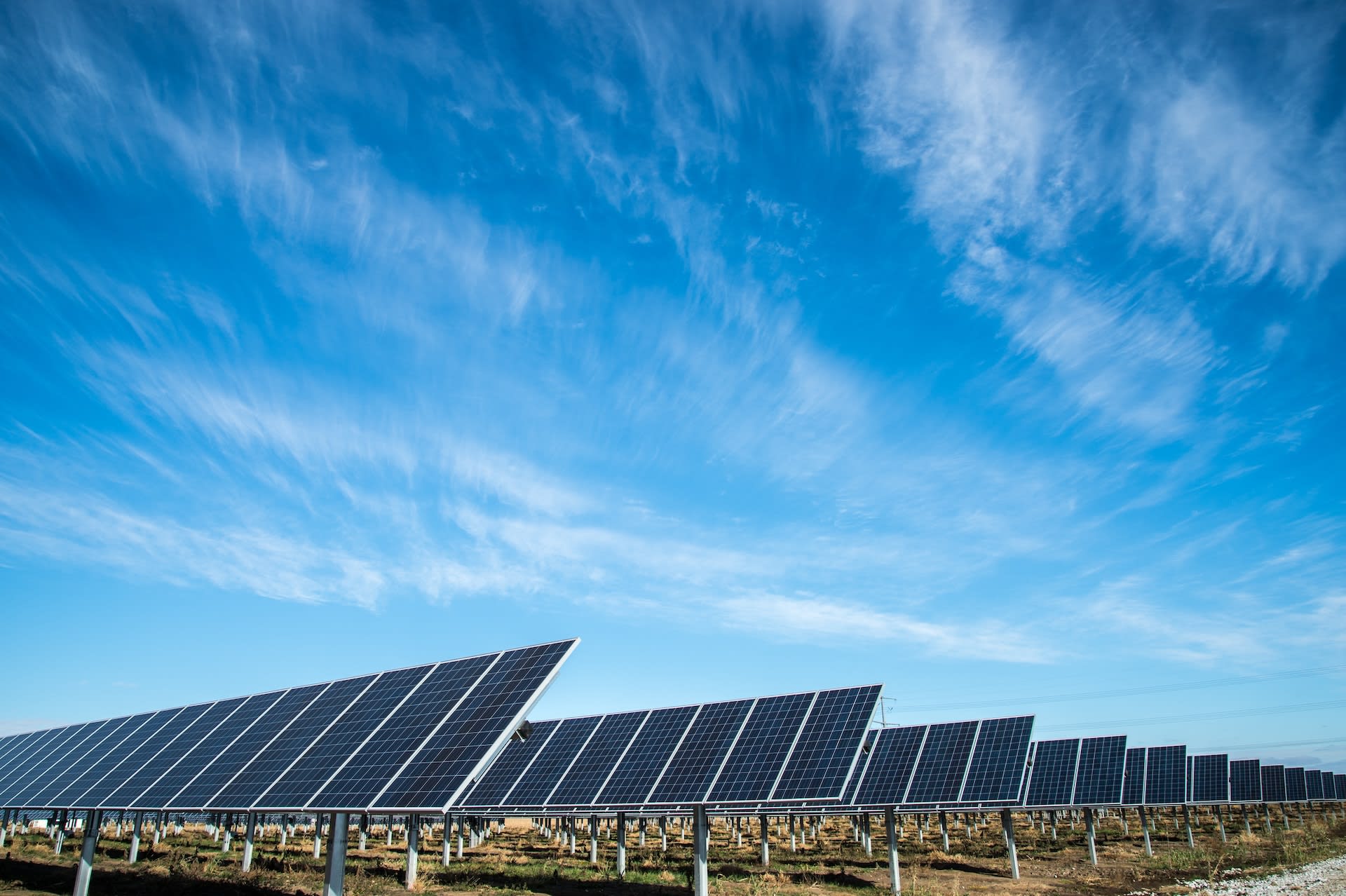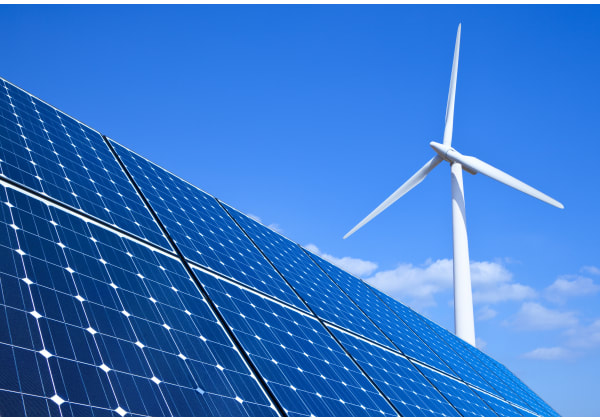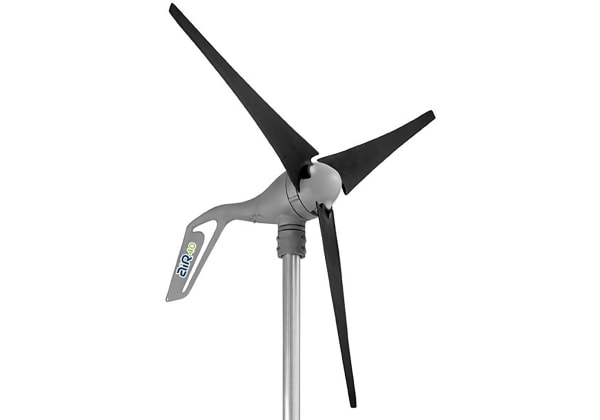- Published 18 Nov 2025
- Last Modified 18 Nov 2025
- 10 min
Operational Efficiency Measurements: Efficiency of Fossil Fuels vs Renewable Energy
Fossil fuel energy and renewable energy have lots in common efficiency-wise, but face their own issues, too.

For leaders navigating the clean energy transition, understanding renewable energy efficiency vs. fossil fuels, as well as how it’s measured, is critical.
This article outlines the facets that go into operational efficiency in both fossil fuels and renewables. It also discusses how and where efficiency gains can be made, as well as the role of technology in improving efficiency and analysing performance.
It also shows how visibility over efficiency metrics matters more broadly for investment decision-making, compliance, and shaping long-term energy strategies.
Operational efficiency in energy, maximising the output versus the input of energy, is an important metric in discovering operational lags. It also helps indicate when and where to make improvements for overall energy efficiency.
Having robust metrics helps shape decision-making when it comes to renewable energy vs. fossil fuels, influencing investments in tools that optimise energy output. This helps with prioritising infrastructure upgrades, meeting decarbonisation targets, and achieving greater levels of risk mitigation.
The need to employ robust efficiency measures is not just driven by cost. It’s also influenced by:
- Stricter regulation and global compliance
- Consumer expectations for energy efficiency
- Shareholder demand to operate in the most sustainable way possible
Operational efficiency in energy production has many factors and variables that determine how efficient energy production is. Having a good understanding of these, as well as knowledge of how to make improvements, makes the journey easier to navigate.
To assist with this understanding, Professor Jacopo Torriti, Professor of Energy Economics and Policy at the University of Reading, provides insights into how energy and demand factor into operational efficiency.
What Issues Can Cause Operational Efficiency Problems?
Operational efficiency challenges exist no matter what type of energy is being produced. Poor maintenance, repair, and operations, and their monitoring could lead to unplanned downtime or reduced output due to equipment not working properly.
Data inaccuracy, seepage, and poor storage make for inaccuracy. It also means reduced visibility, which further contributes to inefficiency as decisions are made based on half a story.
For example, the Levelised Cost of Energy (LCOE) is a metric used to show the average net cost of producing energy for a specific system over its lifetime. It provides test and measurement data.
If the data is inaccurate, the cost is inaccurate too. As such, machinery could cost far more over its lifetime.
Additionally, human error and extreme weather can also affect the ability to produce energy efficiently. Securing the energy network and its production from cyberattacks is also an increasing issue. Dealing with cyber threats costs time and money.
There are also efficiency issues that are either specific to each energy type or that weigh more heavily on one type of energy over another.
Renewable Energy Production
Renewable energy production can be split into four types: wind, solar, hydro, and geothermal. All types are affected by intermittency, which means that when the source of the power, such as wind, is stronger one day and weaker the next.
Prof. Torriti comments on the challenges of wind-generated power:
“The real challenges with wind is when we experience a prolonged period of time without any wind, such as in winter. This is the time of the year when consumption is at its highest, and yet we may experience low wind renewable supply.”
This can create an unbalanced output. Sometimes more energy is used in creating the same amount of output than at other times because the source takes longer to collect, needs storing, or is simply not available.
Equipment degradation is another issue. This is seen commonly in solar power with the solar photovoltaic (PV) system. It creates energy, but the equipment and systems used become less efficient over time, making operational efficiency ratios drop.
According to the US National Renewable Energy Laboratory, PV modules typically degrade 2% per year. Wind equipment also has wear and tear issues, with components, gearboxes, and blades subject to degradation over time.
The way the national energy grid works can also affect operational efficiency. This may be due to the amount of renewable energy generated being more than the grid can absorb. This excess energy must then be stored, thus using more energy and reducing the overall production efficiency.
As well as this, if the amount of energy generated exceeds available storage, the danger is that energy is wasted entirely, further reducing efficiency.
Fossil Fuel Energy Production
Fossil fuels also have their own challenges. Combustion issues can result in large amounts of energy leakage as well as losses during the fuel-to-energy conversion process. Technology has improved this, but traditional coal plants still only operate at around 40% efficiency.
Prof. Torriti comments on how fossil fuel production is being phased out for a ‘cleaner’ electricity system:
“We know that the UK's electricity system has been the cleanest it’s ever been. There are a few factors that have contributed to that, including the phasing out of coal, as well as renewable generation more than doubling in 2024.”
The ageing infrastructure of fossil fuel energy plants also means that efficiency is limited. Outdated boilers and turbines do not run as well as newer ones, and also need more input to get the same amount of energy.
Regulation is also a consideration, as emissions compliance means the risk of financial penalties caused by using ineffective and old equipment raises costs, resulting in cost inefficiencies.
How is Operational Efficiency Measured?
Within the energy sector, operational efficiency is broadly measured by looking at how much is being produced compared to how much could be produced. The potential capacity, how much it costs to produce a given amount, and how much fuel or other energy input is required to produce are taken into account.
Each energy type also has specific measurables; it’s not just a case of comparing like-for-like and looking at a simple renewable energy efficiency vs fossil fuels equation.
Renewable Energy Production
Renewable energy efficiency is all about potential capacity. For example, if we look at wind energy efficiency compared to fossil fuels, wind ranges between 30–50%, while fossil fuels are around 40%. In addition to this, hydro can exceed 50%.
The levelised cost of energy (LCOE) is another factor. This looks at the combination of operations, capital, maintenance, as well as fuel used to give a cost of production per megawatt-hour (MWh).

Fossil Fuel Energy Production
Within fossil fuel energy production, operational efficiency is measured by heat rate, which is how much heat or energy is needed to make one unit of electricity.
The heat rate is shown in BTU/kWh, which is a British thermal unit (Btu). This is defined as the amount of heat required to raise the temperature of one pound of water by one degree, divided by kWh (kilo-watts per hour). The lower the heat rate, the better the efficiency, as less fuel is needed to produce the output unit of electricity.
Meanwhile, thermal efficiency shows the percentage of heat input that is converted into electricity. Modern natural gas combined-cycle plants can reach efficiencies above 60%.
Finally, capacity utilisation shows actual output relative to potential output, and is a measure of capacity, similar to potential capacity. Fossil fuel plants sometimes operate at subcapacity, with production being scaled up or down according to demand.
How Can Operational Efficiency Be Improved?
When we look at operational efficiency, it’s important to take into account how it feeds into other factors such as cost efficiency, complying with regulations, and the overall trend to lower emissions and be as sustainable as possible.
There are also infrastructure considerations in terms of optimising systems and output, as well as introducing systematic resilience to reduce waste and downtime.
Technology is increasingly key to achieving all objectives and creating a smart infrastructure. The end goal is to produce as much energy as possible as leanly as possible for the least input, as well as tailoring output to demand.
Operational Efficiency in Renewable Energy
Fuel cost is negligible in renewables, as the cost lies in harnessing that fuel and making sense of a variable supply of wind, solar, or another energy source.
Data acquisition and logging control, management, and analysis are key. The use of digital technologies such as Supervisory Control and Data Acquisition (SCADA) systems is essential for measuring, monitoring, and directing energy. They help determine what is going on, detect outages or anomalies, forecast maintenance, and direct resources to where they are most needed.
Prof. Torriti elaborates on the importance of understanding operational use via measurable data:
“This would be a key message; making decisions around renewables investment needs to be made with a strong understanding of the consumption side.
Any expert, including those who are trying to install renewable sources, would start from questions like ‘what's the history with the smart meter data or the feed feeder level consumption?’
If a business is quite complex, it will have several cables coming in, in a sense. You don't just have one read to say, ‘this is a consumption at that place’, it will take perhaps six or seven smart meters.
Starting from an analysis of the actual consumption would be the first fundamental step to then make decisions about how to decrease the costs, and then seeing how renewables can come in handy, as well as other energy efficiency measures.”
AI capabilities further enhance such systems by providing accurate analytics, such as predictive maintenance, pattern detection for future improvement, and efficiency.
Load balancing technology is also important in making efficiency improvements. This helps with grid integration and better manages supply and demand. Related to this are storage capabilities, though they could be optimised further.
All of this helps boost the capability of renewables by providing a consistent level of power to the grid. It also stores energy when it's not needed and pumps in extra when it is, such as with lithium-ion batteries or pumped hydro.
Better energy capture, such as using solar panels that store daylight on both sides, further optimises efficiency and also offers better potential capacity gains.
Prof. Torriti expands on this, highlighting solar as a viable investment for renewable energy:
“If you're a business and you're going to invest [in a specific type of clean energy], it’s very difficult to pick a winner. If you have a business facility, installation, or a plant, and you want to look at the local level to invest in a renewable source for your own energy needs, I’d say solar photovoltaics (PV).
Their ‘learning curves’, as we call them, their costs have been decreasing immensely, which means that the payback periods, the returns of investment are reducing significantly, and they make more and more sense.
It's hard to say, as it depends on the size of the business, but if there was a ‘one size fits all’ option, it would be that one.”
Operational Efficiency in Fossil Fuel Energy
Fossil fuel efficiency relies more on making better use of the fuel that is converted into heat and then electricity. Using cogeneration techniques, such as Combined Heat and Power (CHP), makes for better use and thus better overall energy production efficiency.
Additionally, replacing old legacy machinery with new technology is most often incredibly beneficial. It often reduces the effort needed to produce fuel conversion, reduces energy loss, and stores electricity with minimal waste.
Much like with renewable energy, better technology and data management can help many processes, such as:
- Pinpointing the need for maintenance
- Refining combustion processes
- Managing system variables
- Identifying outages
- More efficiently managing downtime and plant availability
Conclusion
Knowing how operational efficiency is managed and how it relates to other efficiency measures is important for understanding how and where to introduce improvements and to what benefit.
As renewables take on greater importance and the transition to net zero gains momentum, being able to assess whether operational efficiency gains are more beneficial is crucial when it comes to renewable energy efficiency vs fossil fuels.
Prof. Torriti speaks about aiming for net zero, and the goals the UK government are pursuing with it in mind:
“The government has a Clean Power 2030 action plan. What we see as ‘clean’ would include nuclear, and to some extent, it can include gas when we don't use it for baseline, but to cover peaks in demand.
The Clean Power 2030 action plan does foresee a certain amount of gas, and certainly hydrogen will play a role, particularly for industrial use; not as a fuel, like gas, but used for certain industrial processes.
Increasingly, experts in the area are looking at what type of research is needed or what has to happen for a small nuclear reactor to get up to speed, and what the completion dates for those ones are.”
Ongoing debates and discussions, such as whether efforts should go into retrofitting a coal-fired plant and introducing carbon capture and storage (CCS) to reduce emissions, continue to prove vital across the board.

Professor Jacopo Torriti is a Professor of Energy Economics and Policy at the University of Reading. He is the Flexibility Theme Lead of the Energy Demand Research Centre (EDRC), serves as a member of the Panel of Technical Experts of the Department for Energy Security and Net Zero, DSO Performance panel, and the Strategic Advisory Team on Energy and Decarbonisation for the Engineering and Physical Sciences Research Council (EPSRC).
Prof. Torriti has authored several books, including ‘Appraising the Economics of Smart Meters’ (2020), ‘Energy Fables’ (2019), and ‘Peak Energy Demand and Demand Side Response’ (2015).
Related Articles
Related links
- Fossil Fuel vs Sustainable Energy Subsidies
- Comparing Carbon Credits vs Renewable Energy Certificates
- Guide to Renewable Energy Technology
- Connected Thinking
- RS | HellermannTyton Renewable Energy Performance
- Battery Storage For Renewable Energy
- RS PRO 5W Polycrystalline Renewable Energy Kit
- RS PRO 10W Polycrystalline Renewable Energy Kit


